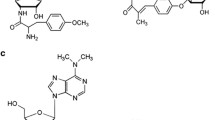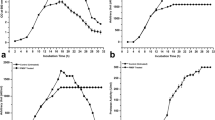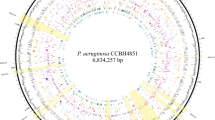Abstract
Colistin is a mixture of polymyxin E1 and E2, bactericidal pentacationic lipopeptides used to treat infections caused by Gram-negative pathogens such as Pseudomonas aeruginosa and Klebsiella pneumoniae. Industrial production of colistin is obtained by a fermentation process of the natural producer Paenibacillus polymyxa var colistinus. NonRibosomal peptide synthetases (NRPS) coding the biosynthesis of polymyxins A, B and P have been recently described, rendering thereof the improvement of their production possible. However, the colistin biosynthesis pathway was not published so far. In this study, a Paenibacillus alvei has been identified by biochemical (Api 50 CH system) and molecular (16S rDNA sequencing) methods. Its culture supernatant displayed inhibitory activity against Gram-negative bacteria (P. aeruginosa, K. pneumoniae, Salmonella spp.). Two polymyxins, E1 and E2, were recovered from the supernatant and were characterized by high resolution LC–MS. A genomic library (960 clones) was constructed to identify the gene cluster responsible for biosynthesis of polymyxins. Selection of the clones harbouring the sequences of interest was obtained by a simple PCR-based screening. We used primers targeting NRPS sequences leading to the incorporation of amino acids present in polymyxins E. The sequences from three clones of interest were assembled on 50.4 kb. Thus, five open reading frames corresponding to a new NRPS gene cluster of 41 kb were identified. In silico, analyses revealed the presence of three NRPS implicated in the biosynthesis of polymyxins E. This work provides insightful information on colistin biosynthesis and might contribute to future drug developments in this group of antibiotics.





Similar content being viewed by others
References
Altschul SF, Gish W, Miller W, Myers EW, Lipman DJ (1990) Basic local alignment search tool. J Mol Biol 215:403–410
Bachmann BO, Ravel J (2009) In silico prediction of microbial secondary metabolic pathways from DNA sequence data. Methods Enzymol 458:181–217
Beatty PH, Jensen SE (2002) Paenibacillus polymyxa produces fusaricidin-type antifungal antibiotics active against Leptosphaeria maculans, the causative agent of blackleg disease of canola. Can J Microbiol 48:159–169
Benedict RG, Stodola FH (1949) Effect of various factors on the production of polymyxin. Ann N Y Acad Sci 51:866–874
Chevrot R, Carlotti A, Sopéna A, Marchant P, Rosenfeld E (2008) Megamonas rupellensis sp. nov., an anaerobe isolated from the caecum of a duck. Int J Syst Evol Microbiol 58:2921–2924
Chevrot R, Didelot S, Van den Bossche L, Tambadou F, Caradec T, Marchant P, Izquierdo E, Sopena V, Caillon J, Barthélémy C, Van Schepdael A, Hoogmartens J, Rosenfled E (2013) A novel depsipeptide produced by Paenibacillus alvei 32 isolated from a cystic fibrosis patient. Probiotics Antimicrob Proteins 5:18–25
Choi SK, Park SY, Kim R, Kim SB, Lee CH, Kim JF, Park SH (2009) Identification of a polymyxin synthetase gene cluster of Paenibacillus polymyxa and heterologous expression of the gene in Bacillus subtilis. J Bacteriol 191:3350–3358
Cochrane SA, Vederas JC (2014) Lipopeptides from Bacillus and Paenibacillus spp.: a gold mine of antibiotic candidates. Med Res Rev. doi:10.1002/med.21321
Conti E, Stachelhaus T, Marahiel MA, Brick P (1997) Structural basis for the activation of phenylalanine in the non-ribosomal biosynthesis of gramicidin S. EMBO J 16:4174–4183
DeCrescenzo Henriksen E, Phillips DR, Peterson JB (2007) Polymyxin E production by P. amylolyticus. Lett Appl Microbiol 45:491–496
Drider D, Rebuffat S (2011) Prokaryotic antimicrobial peptides: from genes to applications. Springer, New York, p 451
Eliasson Lantz A, Jorgensen P, Poulsen E, Lindemann C, Olsson L (2006) Determination of cell mass and polymyxin using multi-wavelength fluorescence. J Biotechnol 121:544–554
Falagas ME, Kasiakou S (2005) Colistin: the revival of polymyxins for the management of multidrug-resistant Gram-negative bacterial infections. Clin Infect Dis 40:1333–1341
Falagas ME, Kasiakou S (2006) Toxicity of polymyxins: a systematic review of the evidence from old and recent studies. Crit Care 10:1–13
Falagas ME, Kasiakou S, Kofteridis D, Roditakis G, Samonis G (2006) Effectiveness and nephrotoxicity of intravenous colistin for treatment of patients with infections due to polymyxin-only-susceptible (POS) Gram-negative bacteria. Eur J Clin Microbiol Infect Dis 25:596–599
Falagas ME, Grammatikos AP, Michalopoulos A (2008) Potential of old-generation antibiotics to address current need for new antibiotics. Expert Rev Anti Infect Ther 6:593–600
Govaerts C, Orwa J, Van Schepdael A, Roets E, Hoogmartens J (2002a) Characterization of polypeptide antibiotics of the polymyxin series by liquid chromatography electrospray ionization ion trap tandem mass spectrometry. J Pept Sci 8:45–55
Govaerts C, Orwa J, Van Schepdael A, Roets E, Hoogmartens J (2002b) Liquid chromatography-ion trap tandem mass spectrometry for the characterization of polypeptide antibiotics of the colistin series in commercial samples. J Chromatogr A 976:65–78
Hong SY, Oh JE, Lee KH (1999) Effect of D-amino acid substitution on the stability, the secondary structure, and the activity of membrane-active peptide. Biochem Pharmacol 58:1775–1780
Kempf I, Fleury MA, Drider D, Bruneau M, Sanders P, Chauvin C, Madec JY, Jouy E (2013) What do we know about resistance to colistin in Enterobacteriaceae in avian and pig production in Europe? Int J Antimicrob Agents 5:379–383
Lee DL, Powers JP, Pflegerl K, Vasil ML, Hancock RE, Hodges RS (2004) Effects of single D-amino acid substitutions on disruption of beta-sheet structure and hydrophobicity in cyclic 14-residue antimicrobial peptide analogs related to gramicidin S. J Pept Res 63:69–84
Li J, Beatty PK, Shah S, Jensen SE (2007) Use of PCR-targeted mutagenesis to disrupt production of fusaricidin-type antifungal antibiotics in Paenibacillus polymyxa. Appl Environ Microbiol 73:3480–3489
Livermore DM (2002) Multiple mechanisms of antimicrobial resistance in Pseudomonas aeruginosa: our worst nightmare? Clin Infect Dis 34:634–640
Marahiel MA, Stachelhaus T, Mootz HD (1997) Modular peptide synthetases involved in nonribosomal peptide synthesis. Chem Rev 97:2651–2674
Martin NI, Hu H, Moake MM, Churey JJ, Whittal R, Worobo RW, Vederas JC (2003) Isolation, structural characterization, and properties of Mattacin (Polymyxin M), a cyclic peptide antibiotic produced by Paenibacillus kobensis M. J Biol Chem 278:13124–13132
Matar G, Chaar M, Araj G, Srour Z, Jamaleddine G, Hadi U (2005) Detection of a highly prevalent and potentially virulent strain of Pseudomonas aeruginosa from nosocomial infections in a medical center. BMC Microbiol 5:5–29
Naghmouchi K, Drider D, Baah J, Teather R (2010) Nisin A and polymyxin B as synergistic inhibitors of Gram-positive and Gram-negative bacteria. Probiotics Antimicrob Proteins 2:98–103
Naghmouchi K, Belguesmia Y, Baah J, Teather R, Drider D (2011) Antibacterial activity of class I and IIa bacteriocins combined with polymyxin E against resistant variants of Listeria monocytogenes and Escherichia coli. Res Microbiol 162:99–107
Naghmouchi K, Hammami R, Fliss I, Teather R, Baah J, Drider D (2012) Colistin A and colistin B among inhibitory substances of Paenibacillus polymyxa JB05-01-1. Arch Microbiol 5:363–370
Naghmouchi K, Baah J, Hober D, Jouy E, Rubrecht C, Sané F, Drider D (2013) Synergistic effect between colistin and bacteriocins in controlling Gram-negative pathogens and their potential to reduce antibiotic toxicity in mammalian epithelial cells. Antimicrob Agents Chemother 57:2719–2725
Nation RL, Li J, Cars O, Couet W, Dudley MN, Kaye KS, Mouton JW, Paterson DL, Tam VH, Theuretzbacher U, Tsuji BT, Turnidge JD (2014) Framework for optimisation of the clinical use of colistin and polymyxin B: the Prato polymyxin consensus. Lancet Infect Dis 14:70850–70853
Newton BA (1956) The properties and mode of action of the polymyxins. Bacteriol Rev 20:14–27
Niu B, Vater J, Rueckert C, Blom J, Lehmann M, Ru JJ, Chen XH, Wang Q, Borriss R (2013) Polymyxin P is the active principle in suppressing phytopathogenic Erwinia spp. by the biocontrol rhizobacterium Paenibacillus polymyxa M-1. BMC Microbiol 137:1–13
Olli S, Rangaraj N, Nagaraj R (2013) Effect of selectively introducing arginine and D-amino acids on the antimicrobial activity and salt sensitivity in analogs of human beta-defensins. PLoS One 9:1–10
Orwa JA, Govaerts C, Gevers K, Roets E, Van Schepdael A, Hoogmartens J (2002) Study of the stability of polymyxins B1, E1 and E2 in aqueous solution using liquid chromatography and mass spectrometry. J Pharm Biomed Anal 29:203–212
Pichard B, Larue JP, Thouvenot D (1995) Gavaserin and saltavalin, new peptide antibiotics produced by Bacillus polymyxa. FEMS Microbiol Lett 133:215–218
Reynaldi FJ, De Giusti MR, Alippi AM (2004) Inhibition of the growth of Ascosphaera apis by Bacillus and Paenibacillus strains isolated from honey. Rev Argent Microbiol 36:52–55
Rossolini GM, Arena F, Pecile P, Pollini S (2014) Update on the antibiotic resistance crisis. Curr Opin Pharmaco 18:56–60
Röttig M, Medema MH, Blin K, Weber T, Rausch C, Kohlbacher O (2011) NRPSpredictor2-a web server for predicting NRPS adenylation domain specificity. Nucleic Acids Res 39:362–367
Sambrook JF, Russell DW (2001) Molecular cloning: a laboratory manual. Cold Spring Harbor Laboratory Press, New York, p 2100
Sarkar S, DeSantis ER, Kuper J (2007) Resurgence of colistin use. Am J Health Syst Pharm 64:2462–2466
Schwarzer D, Finking R, Marahiel MA (2003) Nonribosomal peptides: from genes to products. Nat Prod Rep 20:275–287
Shaheen M, Li J, Ross AC, Vederas JC, Jensen SE (2011) Paenibacillus polymyxa PKB1 produces variants of polymyxin B-type antibiotics. Chem Biol 18:1640–1648
Stachelhaus T, Mootz HD, Marahiel MA (1999) The specificity-conferring code of adenylation domains in nonribosomal peptide synthetases. Chem Biol 6:493–505
Stansly PG (1947) Studies on polymyxin: isolation and identification of Bacillus polymyxa and differentiation of polymyxin from certain known antibiotics. Bacteriol 54:549–556
Stansly PG (1949) The polymyxins: a review and assessment. Am J Med 7:807–818
Strieker M, Tanović A, Marahiel MA (2010) Nonribosomal peptide synthetases: structures and dynamics. Curr Opin Struct Biol 20:234–240
Tambadou F, Lanneluc I, Sablé S, Klein GL, Doghri I, Sopéna V, Didelot S, Barthélémy C, Thiéry V, Chevrot R (2014) Novel nonribosomal peptide synthetase (NRPS) genes sequenced from intertidal mudflat bacteria. FEMS Microbiol Lett 357:123–130
Tupinamba G, da Silva AJ, Alviano CS, Souto-Padron T, Seldin L, Alviano DS (2008) Antimicrobial activity of Paenibacillus polymyxa SCE2 against some mycotoxin-producing fungi. J Appl Microbiol 105:1044–1053
Vaara M, Fox J, Loidl G, Siikanen O, Apajalahti J, Hansen F, Frimodt-Moller N, Nagai J, Takano M, Vaara T (2008) Novel polymyxin derivatives carrying only three positive charges are effective antibacterial agents. Antimicrob Agents Chemother 52:3229–3236
Velkov T, Thompson PE, Nation RL, Li J (2010) Structure-activity relationships of polymyxin antibiotics. J Med Chem 53:1898–1916
Velkov T, Roberts KD, Nation RL, Thompson PE, Li J (2013) Pharmacology of polymyxins: new insights into an ‘old’ class of antibiotics. Future Microbiol 8:711–724
Velkov T, Roberts KD, Nation RL, Wang J, Thompson PE, Li J (2014) Teaching ‘old’ polymyxins new tricks: new-generation lipopeptides targeting gram-negative ‘superbugs’. ACS Chem Biol 16:1172–1177
Vogler K, Studer RO (1966) The chemistry of the polymyxin antibiotics. Experientia 22:345–354
Wilkinson S, Lowe LA (1966) Structures of the polymyxins A and the question of identity with the polymyxins M. Nature. doi:10.1038/212311a0
Yoneyama H, Katsumata R (2006) Antibiotic resistance in bacteria and its future for novel antibiotic development. Biosci Biotechnol Biochem 70:1060–1075
Yuan Z, Tam VH (2008) Polymyxin B: a new strategy for multidrug-resistant Gram-negative organisms. Expert Opin Investig Drugs 17:661–668
Acknowledgments
We thank « l’Association Vaincre La Mucoviscidose » for their financial support.
Author information
Authors and Affiliations
Corresponding author
Additional information
Communicated by Djamel Drider.
Rights and permissions
About this article
Cite this article
Tambadou, F., Caradec, T., Gagez, AL. et al. Characterization of the colistin (polymyxin E1 and E2) biosynthetic gene cluster. Arch Microbiol 197, 521–532 (2015). https://doi.org/10.1007/s00203-015-1084-5
Received:
Revised:
Accepted:
Published:
Issue Date:
DOI: https://doi.org/10.1007/s00203-015-1084-5




